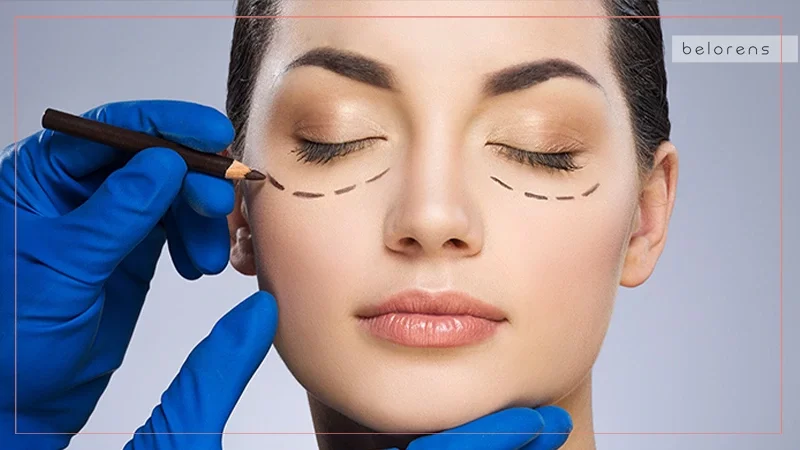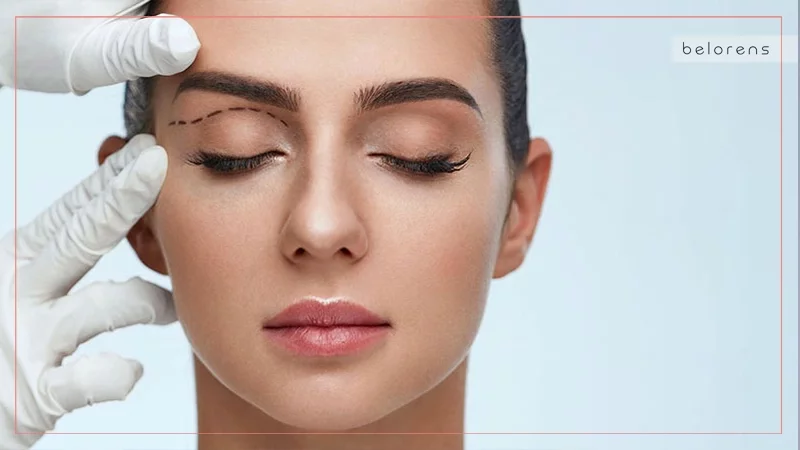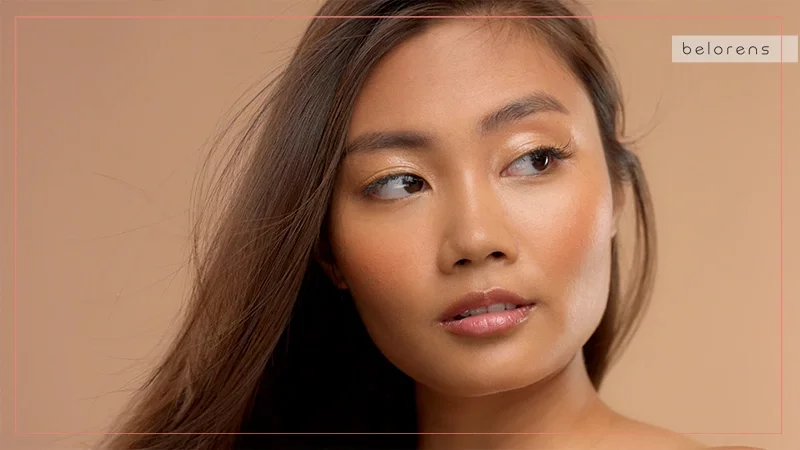Published on 25 Aug 2024 | Last updated on 29 Aug 2024
Blepharoplasty, Canthoplasty, Canthopexy: What Are All These Procedures?
- ByMedical Content Team
- Medically Reviewed byDr. Sabine Kulhanek
Fact checked

Eyelid surgery, technically known as blepharoplasty, encompasses a variety of procedures aimed at enhancing the appearance and function of the eyelids. Whether driven by cosmetic desires or medical necessity, eyelid surgeries can address a range of concerns from droopy lids and under-eye bags to creating a more defined and exotic eye shape.
In the world of eyelid surgery, there are several specific types of procedures, each tailored to address particular needs and achieve distinct results. Upper and lower blepharoplasty are the most well-known, focusing on removing excess skin and fat to rejuvenate the eye area. However, more specialized surgeries like cat eye surgery, canthoplasty, and canthopexy offer targeted solutions for those looking to refine the outer corners of their eyes, either for a more lifted appearance or to correct structural issues.
This blog post will explore these different types of eyelid surgery in detail. We will look at the objectives and processes of each procedure, providing a comprehensive guide to help you understand which might be the best fit for your needs. Whether you're considering surgery to enhance your appearance or to correct functional issues, this overview will give you a clearer picture of the options available and what they entail.
Upper blepharoplasty
Upper blepharoplasty or upper eyelid surgery is the most common type of eyelid surgery. It is a surgical procedure designed to improve the appearance and function of the upper eyelids. As we age, the skin around our eyes loses its elasticity, leading to drooping eyelids and the formation of excess skin and fat. This can create a tired, aged appearance and, in severe cases, impair vision. Upper blepharoplasty addresses these issues by removing the surplus skin and fat, resulting in a more youthful and alert look.
An upper eyelid surgery is typically performed under local anesthesia with sedation or general anesthesia, depending on the patient's preference and the surgeon's recommendation. During the surgery, the surgeon makes precise incisions along the natural creases of the upper eyelids, ensuring that any resulting scars are well-concealed. Through these incisions, the surgeon removes excess skin, tightens underlying muscles, and repositions or removes excess fat. The incisions are then carefully closed with fine sutures to minimize scarring.
Upper blepharoplasty offers several benefits, including a more youthful and refreshed appearance, improved symmetry of the eyes, and in cases where vision was impaired by drooping skin, enhanced visual function.
In summary, upper blepharoplasty is an effective and popular procedure for those looking to rejuvenate their upper eyelids. By removing excess skin and fat and tightening the muscles, this surgery can significantly enhance the appearance and function of the eyes, contributing to a more youthful and alert look.
Lower blepharoplasty

Lower blepharoplasty or lower eyelid surgery is a surgical procedure aimed at improving the appearance of the lower eyelids by addressing issues such as under-eye bags, wrinkles, and sagging skin. Over time, the delicate skin under the eyes can become loose and fatty deposits can accumulate, leading to a tired or aged appearance. Lower blepharoplasty targets these concerns to create a smoother, more youthful look.
Lower blepharoplasty is typically performed under local anesthesia with sedation or general anesthesia, ensuring the patient’s comfort throughout the procedure. During the surgery, the surgeon can use one of two primary techniques: transconjunctival or transcutaneous.
- Transconjunctival technique: This method involves making an incision on the inside of the lower eyelid, leaving no visible scars on the outside. Through this incision, the surgeon can remove or reposition excess fat to reduce puffiness and improve the contour of the lower eyelid. This technique is particularly suitable for patients with good skin elasticity and minimal excess skin.
- Transcutaneous technique: In this approach, the surgeon makes an incision just below the lower lash line. Through this external incision, excess skin can be removed, and fat can be either excised or repositioned to achieve a smoother appearance. The surgeon may also tighten the underlying muscles and support structures if necessary. This technique is beneficial for patients with significant skin laxity and wrinkles.
The results of lower blepharoplasty can be quite transformative, offering a rejuvenated and refreshed appearance. The under-eye area appears smoother, with reduced puffiness and fewer wrinkles, giving the face a more youthful and alert look.
Lower blepharoplasty can be combined with upper blepharoplasty. In fact, it’s quite common to perform both procedures simultaneously. This approach offers several benefits, including a single recovery period and reduced overall costs, as it combines the surgeries into one operative session. Combining both procedures is often recommended for patients who need improvements in both the upper and lower eyelids. It helps achieve a balanced and rejuvenated appearance around the eyes.
Canthoplasty

Canthoplasty is a specialized surgical procedure aimed at reconstructing and tightening the outer corner of the eyelid, known as the lateral canthus. This surgery is often performed to correct eyelid malpositions such as ectropion (where the eyelid turns outward) and entropion (where the eyelid turns inward), which can cause discomfort and potential damage to the eye. Additionally, canthoplasty is popular for cosmetic reasons, as it can create a more youthful and aesthetically pleasing almond-shaped eye.
The procedure typically takes one to three hours and can be done under local or general anesthesia. During the surgery, the oculoplastic surgeon makes a small incision near the outer corner of the lower eyelid. Through this incision, the surgeon tightens the eyelid by removing excess skin, fat, and muscle. The lateral canthus is then repositioned and secured to the orbital bone, which helps to lift and reshape the eyelid. This adjustment not only improves the eyelid’s function but also enhances the overall appearance of the eye.
- There are two main types of canthoplasty: lateral canthoplasty and epicanthoplasty. Lateral canthoplasty focuses on the outer corner of the eye, while epicanthoplasty addresses the inner corner near the nasal bridge. Both procedures aim to correct functional issues and improve the cosmetic appearance of the eyes.
Also Read: Celebrities with Almond Eyes: A Glimpse into Timeless Elegance
Canthopexy
Canthopexy is a surgical procedure designed to reinforce and stabilize the lateral canthus, which is the outer corner of the eye where the upper and lower eyelids meet. This procedure is often performed to address issues such as eyelid laxity, ectropion (outward turning of the eyelid), or misalignment of the eyelids.
Unlike canthoplasty, which involves cutting and reattaching the lateral canthal tendon, canthopexy uses sutures to tighten and support the existing structures without severing the tendon. This makes canthopexy a less invasive option with a lower risk of altering the natural shape of the eyelid. The procedure typically involves making a small incision at the outer edge of the eyelid, through which the surgeon places sutures to secure the eyelid to the orbital bone.
Canthopexy is commonly performed in conjunction with other eyelid surgeries, such as lower blepharoplasty, to enhance the overall results and provide additional support to the eyelid. The recovery period for canthopexy is generally shorter and involves less swelling and bruising compared to more invasive procedures like canthoplasty¹.
This procedure is suitable for both medical and cosmetic purposes, helping to improve the function and appearance of the eyelids. It is particularly beneficial for patients experiencing drooping or sagging eyelids due to aging or previous surgeries.
East Asian blepharoplasty

East Asian blepharoplasty, commonly known as double eyelid surgery, is a cosmetic procedure that creates a crease in the upper eyelid, which is naturally absent in some individuals of East Asian descent. (This eyelid shape is called a monolid, also known as an epicanthal fold, which lacks a visible crease separating the upper eyelid into two parts.) This surgery is particularly popular among people from Chinese, Japanese, and Korean backgrounds.
The primary goal of East Asian blepharoplasty is to enhance the appearance of the eyelids, making the eyes appear larger and more expressive. The procedure can be performed using two main techniques: the non-incisional method and the incisional method.
The non-incisional method, also known as suture ligation, involves placing sutures through the upper eyelid to create the desired crease. This technique is less invasive, has a shorter recovery time, and results in fewer complications. However, the crease created by this method may not be as dynamic and can diminish over time.
The incisional method involves making an incision across the upper eyelid to remove excess skin, fat, and muscle. This technique provides more permanent results and allows for greater customization of the eyelid shape. However, it is more invasive and requires a longer recovery period.
East Asian blepharoplasty can also be combined with other procedures, such as epicanthoplasty, which extends the inner corner of the eye towards the nose, further enhancing the eye’s appearance. This combination can help achieve a more balanced and aesthetically pleasing look.
Overall, East Asian blepharoplasty is a highly sought-after procedure for those looking to achieve a more defined and attractive eyelid crease.


